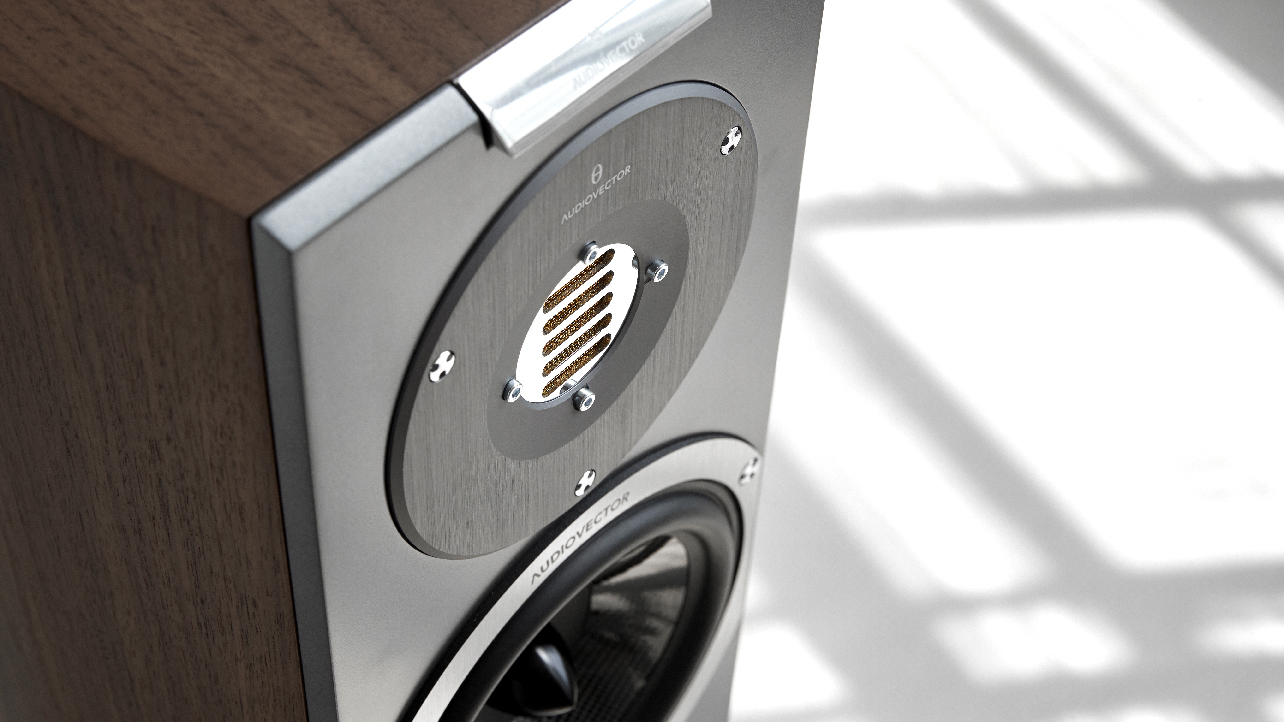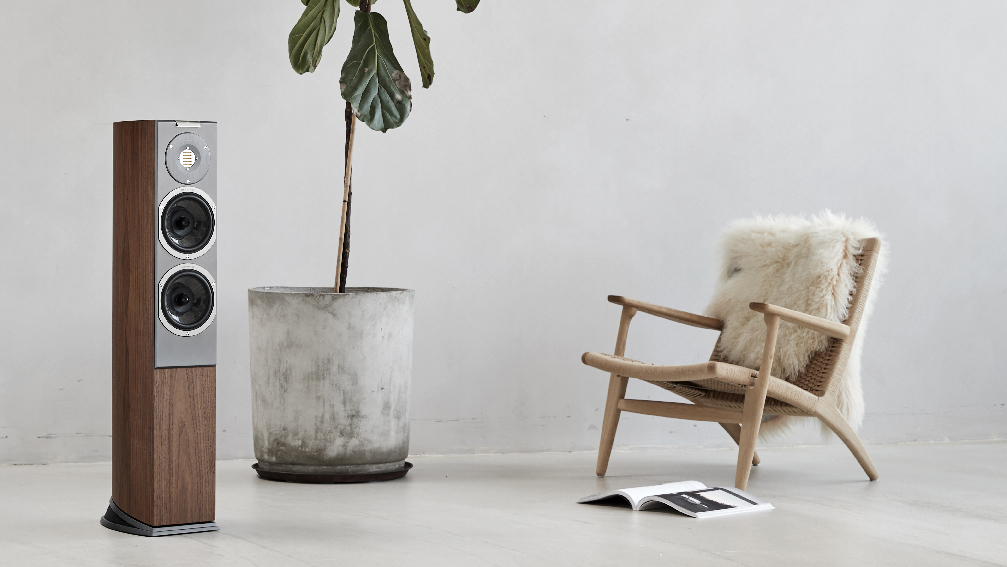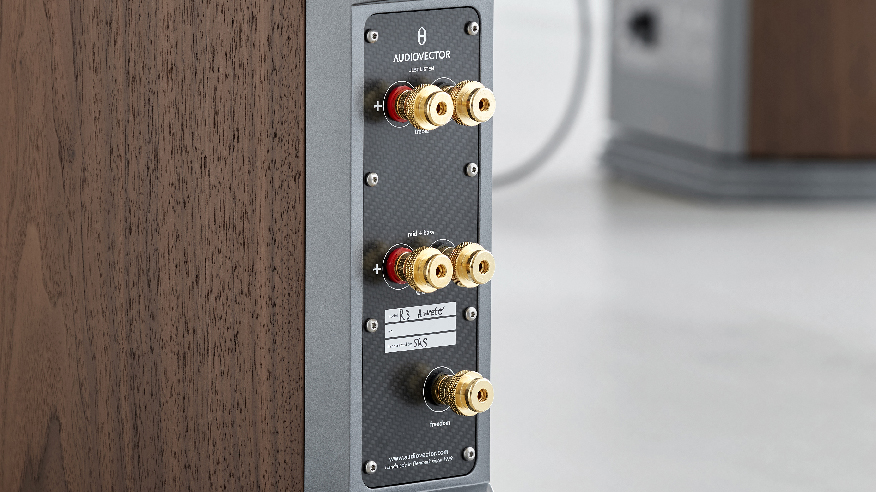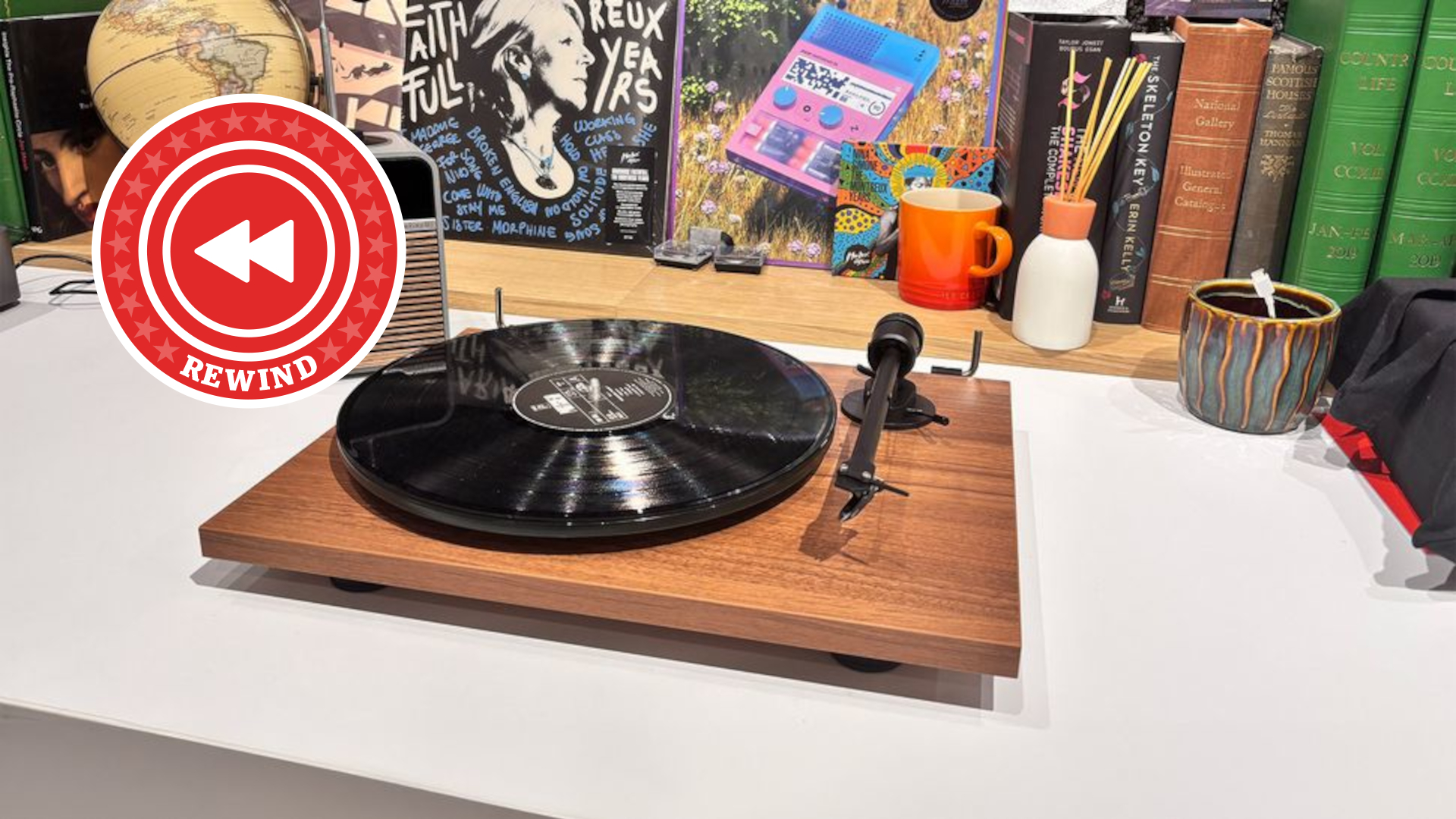What Hi-Fi? Verdict
The R3 Arretés may not be an obvious choice at this level, but they’re good enough to stand toe-to-toe with the very best
Pros
- +
Impressive resolution and rhythm
- +
Strong dynamics and punchy bass
- +
Excellent build and finish
Cons
- -
Demand top-class partnering kit
Why you can trust What Hi-Fi?
The sales of hi-fi equipment have long been driven by people’s desire to upgrade. Normally this means a wholesale change of a component, but it doesn’t necessarily have to.
Electronics brands such as Naim and Cyrus have had considerable success in offering upgrades, such as outboard power supplies, to make their existing components sound even better, so negating the need for outright change. It’s an approach that appeals because it works, and still protects your initial investment.
Things are different when it comes to speakers though. Audiovector stands pretty much alone among the established brands to offer such solutions. It has just revamped two of its core ranges, there’s the standmounter line, now called R1, and the R3 floorstanders under test here.
Each line is available in three performance levels, where the models differ in drive units, crossover and structural details in the cabinets. The Arreté level is the range topper in both cases, and represents the best that Audiovector offers in that particular design.
If you buy into the lower level of the range, you can upgrade to any of the more premium models for the retail price difference, plus a little extra to cover shipping and labour costs. That sounds like a fair deal, opening an upgrade path few speaker rivals can emulate.
But what happens once you reach the end point? Does the Arreté spec do enough to challenge the very best at the price, or is it a compromised product that only represents value when viewed through Audiovector’s upgrade prism?
Build

Our first thought on taking the speakers out of their packaging is that they look lovely. Those curved, strategically braced HDF cabinets are claimed to be 25 per cent stronger than the previous generation and are available in four finish options – Italian walnut, black ash, white silk and African rosewood. We think they look classy regardless of the covering chosen. Fit and finish is as good as the price demands and the overall impression is one of understated luxury.
Those distinctive drive units are designed in-house, rather than bought off-the-shelf, and combine the company’s exotic Integrator AMT (Air Motion Transformer) tweeter with a pair of 16.5cm mid/bass drivers, which are tuned by a downward firing port.
That AMT tweeter is a real point of differentiation between the R3 and its competition. It’s a great alternative to the domes (soft or hard) used by most rivals, and promises greater agility and detail than those conventional designs.

Floorstander Yes
Sensitivity 90.5 (db/w/m)
Impedance 8 ohms
Max power 350W
Bi-wirable Yes
Finishes x4
Dimensions (hwd) 104 x 21 x 35
The mid/bass drivers are new and work in a 2.5-way configuration, where the bass output of the upper drive unit is augmented by the lower. Both drive units combine woven aramid with wood resin in their cones to deliver a good combination of rigidity and damping. Audiovector claims that these units are notably more detailed and dynamic than those used in the previous range.
At this level, we would expect most speakers to have exotic drive units, but it’s the attention to engineering detail that lifts the R3 Arretés above most rivals. The rearward output from the AMT tweeter is allowed to escape from the back of the cabinet in a bid to produce a more spacious and airy presentation, while a great deal of care is taken over driver mountings and resonance control in the cabinets.
The company has even looked at the spiking arrangement and the result is that the floor spikes screw into a steel beam fitted to the underside of the floor plinth and decouple the speakers from the mass of the floor. The result is claimed to be a more articulate and accurate sound.
It doesn’t stop there. Naturally, the crossover is carefully calibrated and packed with high quality components. But the company’s engineers have gone one step further. That crossover is then cryogenically frozen down to -238ºC in a process designed to relieve internal stresses in the copper conductors and reduce resistance. The sonic benefit should be improved clarity and resolution.
Compatibility

Look around the back and you’ll notice that the chunky bi-wire speaker terminals are mounted on a carbon fibre panel rather than metal. This is to avoid any unwanted electrical interaction with the crossover components. On the Arreté, there’s a fifth terminal for earthing purposes that is connected to the drive unit chassis to get rid of any unwanted currents flowing in the structure.
Audiovector has given this the rather grand title of Freedom Grounding and supplies a lead to connect the speakers directly to the earth in the house mains. The lead isn’t cheap though, coming in at a hefty £600.
While that’s a lot of money for a cable, we’re left in no doubt about the positive effect on sound quality. These floorstanders really do sound clearer and better focused when the Freedom Grounding is used.
Any speaker of this level needs top class electronics to shine. We use our reference sources of Naim ND555/555PS music streamer and Technics SL-1000R record player with Burmester’s 088/911 pre/power amplifier providing the muscle. We also use Naim’s SuperNait 3 to see how the speakers perform with quality, but less ambitious amplification.
A high sensitivity just short of 91dB/W/m and nominal impedance of 8 ohms suggests lower powered amps won’t have an issue driving these speakers, and so it proves, with even Cambridge’s CXA61 proving capable of decent results.
Once set up, we become aware of just how compact these speakers are by high-end floorstander standards – they stand 104cm high and just 21cm wide. If you have a large room, we would point you towards some of the bigger speakers in Audiovector’s armoury, but the R3s are perfectly sized so as not to dominate in small to medium rooms. They work superbly in our mid-sized test room, delivering plenty of low-end weight without sounding excessive in any way.
We position them a little out into the room and slightly angled in towards the listening position. They don’t prove particularly fussy and have a wide enough dispersion to sound balanced from a variety of seating positions.
Sound

We play a range of music from Red Hot Chili Peppers to the likes of Beethoven and Kate Bush. It doesn’t take long to be impressed by the R3’s clarity. These are astonishingly detailed speakers that deliver sound in a forthright and explicit manner. There’s no fudging of sonic edges here, every note is superbly defined from the leading edge onwards.
There’s no shortage of punch, with the speaker reproducing the Chili Peppers’ hits with all the drive and attack intact. We’re impressed by the speaker’s responsiveness and ability to communicate the momentum of the music.
While there’s plenty of analysis on offer, it’s the R3’s ability to deliver all that information in a musical and cohesive whole that impresses. We like that it doesn’t make a meal of the recording’s hard and bright edges, keeping things listenable where rivals would have been happy to tear things apart.
Beethoven’s Fifth Symphony allows the Audiovectors to show their impressive dynamic reach and ability to track a multitude of instrumental strands without getting confused. These speakers have a controlled and refined manner that suits music such as this well, and enough in the way of low-end authority and scale to truly satisfy.
They’re nicely judged tonally, sounding balanced and cohesive while treading that fine line between having some sonic character but still sounding authentic. Given a little care in positioning, there’s plenty of power at low frequencies yet precision and tautness aren’t sacrificed in the process.
Stereo imaging is terrific. The speaker’s presentation is crisply focused and convincingly layered, placing instruments and sound in a well-organised soundstage. The R3’s direct presentation means that they present the sound in a forward manner, but there’s still enough in the way of image depth to satisfy.
Kate Bush’s Hounds Of Love is a favourite of ours and the Audiovectors sound right at home with the dense production and complex rhythms. Bush’s vocals come through with nuance and passion, the R3’s explicit midrange-resolving subtleties ensuring tracks such as Under The Ivy come to life. That AMT tweeter works a treat, making most alternatives sound a little crude and lacking in agility. Audiovector’s engineers have done a fine job integrating the trio of drive units to sound so seamless.
Verdict
By high-end standards, the R3 Arretés are something of a left-field choice. They’re relatively small, and are obviously related to cheaper products.
But Audiovector has done a superb job here, adding a smorgasbord of ingredients that turn the basic R3 recipe into one that can take on the best even at this elevated level.
These Arretés should be seen as more than just tweaked R3s - they’re brilliant speakers in their own right.
SCORES
- Sound 5
- Compatibility 5
- Build 5
MORE:
Read all our Audiovector reviews
What Hi-Fi?, founded in 1976, is the world's leading independent guide to buying and owning hi-fi and home entertainment products. Our comprehensive tests help you buy the very best for your money, with our advice sections giving you step-by-step information on how to get even more from your music and movies. Everything is tested by our dedicated team of in-house reviewers in our custom-built test rooms in London, Reading and Bath. Our coveted five-star rating and Awards are recognised all over the world as the ultimate seal of approval, so you can buy with absolute confidence.

